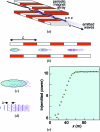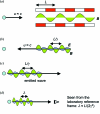A simplified description of X-ray free-electron lasers
- PMID: 21335894
- PMCID: PMC3042323
- DOI: 10.1107/S090904951004896X
A simplified description of X-ray free-electron lasers
Abstract
It is shown that an elementary semi-quantitative approach explains essential features of the X-ray free-electron laser mechanism, in particular those of the gain and saturation lengths. Using mathematical methods and derivations simpler than complete theories, this treatment reveals the basic physics that dominates the mechanism and makes it difficult to realise free-electron lasers for short wavelengths. This approach can be specifically useful for teachers at different levels and for colleagues interested in presenting X-ray free-electron lasers to non-specialized audiences.
Figures



References
-
- Altarelli, M. (2010). From Third- to Fourth-Generation Light Sources: Free-Electron Lasers in the UV and X-ray Range, in Magnetism and Synchrotron Radiation, edited by E. Beaurepaire, H. Bulou, E. Scheurer and J. K. Kappler. Berlin: Springer.
-
- Bonifacio, R. & Casagrande, S. (1985). J. Opt. Soc. Am. B, 2, 250–258.
-
- Bonifacio, R., De Salvo, L., Pierini, P., Piovella, N. & Pellegrini, C. (1994). Phys. Rev. Lett. 73, 70–73 - PubMed
-
- Bonifacio, R., Pellegrini, C. & Narducci, L. M. (1984). Opt. Commun. 50, 373–378.
-
- Brau, C. A. (1990). Free-Electron Lasers. Oxford: Academic Press.
Publication types
LinkOut - more resources
Full Text Sources

